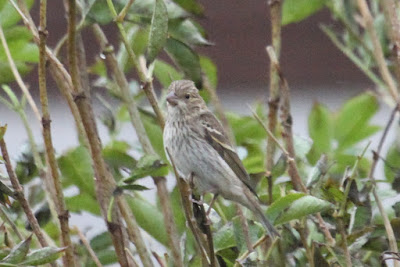After a meeting in Newcastle on Thursday, 16 'Great Aukers' headed up to Seahouses on Friday and headed out to Staple Island to witness the spectacle of seabirds on the Farne Islands. After the first trip (and a great Fish & Chips lunch) I headed out to Inner Farne to photograph terns (absent from Staple Island).
 |
| Staple Island, The Farnes. |
Staple Island is great for auks, with thousands of breeding Puffins, Common Guillemots and Razorbills. We started by doing a tour from the boat of the seabird cliffs and rocks, where we saw lots of auks and Grey Seals.
 |
| Grey Seals. |
We then headed over to Staple Island where we spent an hour admiring the various birds it had to offer. Puffins were the most photogenic and were the species that I spent most time photographing. I always say that you can eat too much food and drink too much wine, but you can never take too many Puffin photos!
Here's a selection of my best photos (click on the photos to view them full-size).
After the Puffins I spent a bit of time photographing Common Guillemots and the Great Auk's closest extant relative, Razorbill. Here are some photos that I took on the island and also from the boat. The first photograph below is of a 'Bridled' Guillemot, named after the white eye-ring and stripe behind the eye. The Bridled form of Guillemot increase in frequency the further north you go, but on the Farnes they make up about 5% of the birds.
 |
| Rock Pipit, one of the few breeding passerines on The Farnes. |
From the boat we were witness to one of the many perils newly fledged Guillemot chicks face. This Great Black-backed Gull was tucking into a guillemot chick that it had presumably recently killed.
Finally, on the way back to land we spotted some Bottle-nosed Dolphins feeding in the bay in front of Bamburgh Castle, so headed straight over to see them. The dolphins put on a really nice show, swimming and 'porpoising' around the boat. The first photos below show the dolphins with Bamburgh Castle in the background.
After we landed back at Seahouses it was off for a quick lunch of fish and chips, say "Bon voyage" to my brilliant host Matt Ridley and the fantastic host of scientists that I'd had the pleasure to spend the past 24 hours with and then off back to the quay for my second trip of the afternoon, this time to Inner Farne. By chance, Chris Redfern (editor of Ringing and Migration, who had been at the previous day's meeting, but not on the Staple Island boat) was heading over to Inner Farne to do some ringing, so it was really nice to have a good chat to him on the way across.
Inner Farne is famous for it's large colonies of Arctic, Common and Sandwich Terns. A hat is a must for this island as the terns can be quite aggressive in defending their nest sites, some of which are actually located on the boardwalk across the island. The first thing I did was to check the rocks next to the landing quay to see if there were any Roseate Terns roosting there. Roseate Terns don't nest on the Farnes, but failed breeders from Coquet Island to the south often spend time on the Farnes. My endeavour was rewarded with a lovely 'rosy' Tern sat on the rocks with the Arctic Terns.
 |
| Roseate Tern, Inner Farne. |
 |
| Roseate Tern, Inner Farne. |
I then headed up onto the main part of the island where I spent about half an hour photographing the terns breeding around the visitors centre (in between ducking out of the way of overly-aggressive terns). Here's the best of those photos.
The centre of Inner Farne also has a colony of Sandwich Terns, which were busy coming and going with sandeels.
Finally, the island also has a good population of various other species such as Common Eider, Eurasian Shag and Kittiwake. Here's the photos of these 'best of the rest'.
 |
| Common Eider with chicks |
 |
| Common Eider at a nest |
 |
| Eurasian Shag |
 |
| Kittywake with two chicks |
 |
| Kittywake - say 'Aaaaah' |
 |
| Kittywake enjoying the updrafts on the seabird cliffs. |
So, another great visit up to the Farne Islands providing some great company with some great birds. Northumberland is a lovely part of the country and if you've never been, you're definitely missing out!











